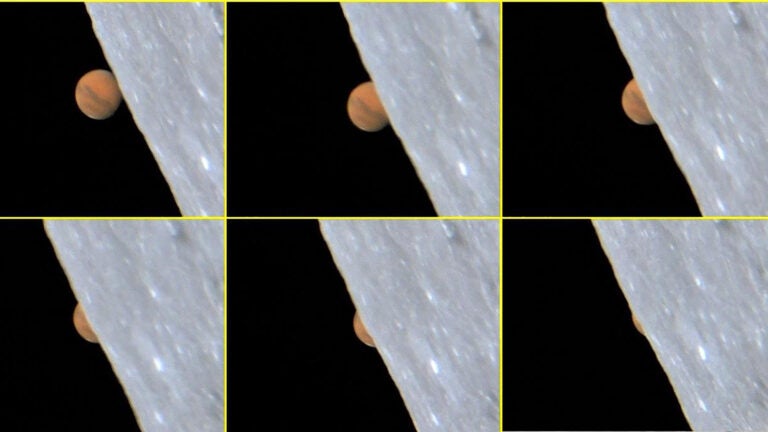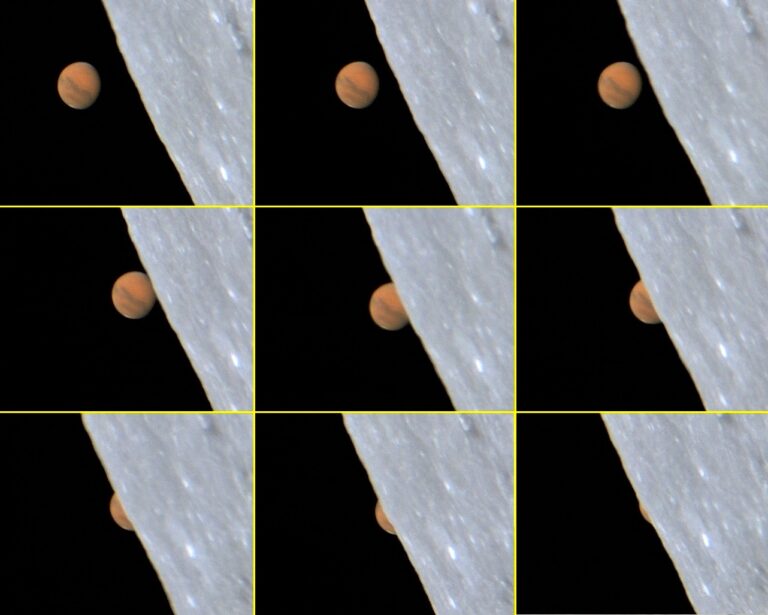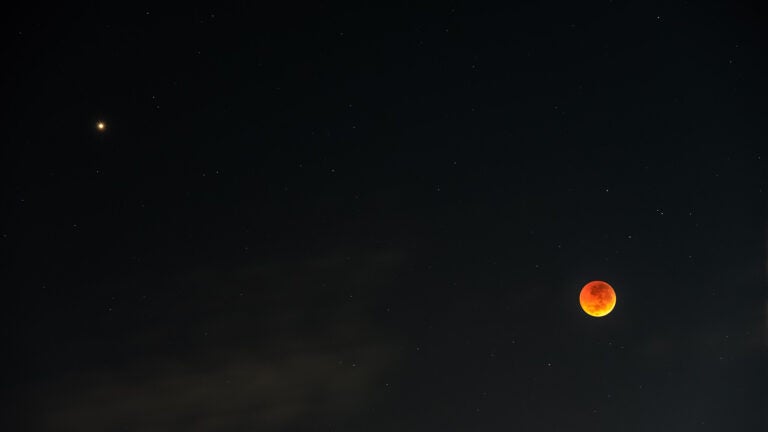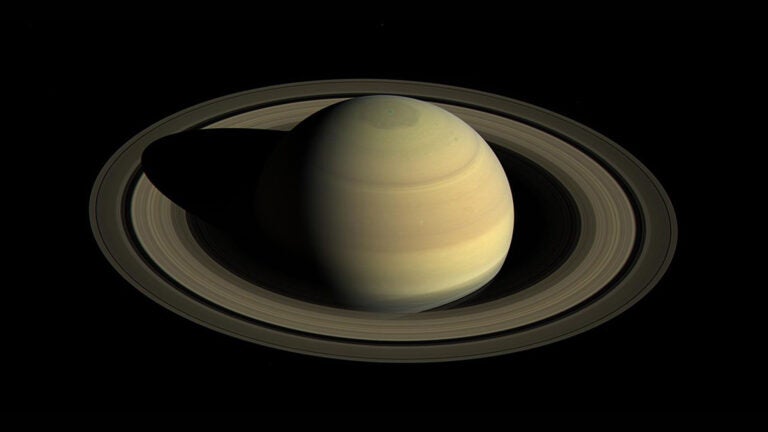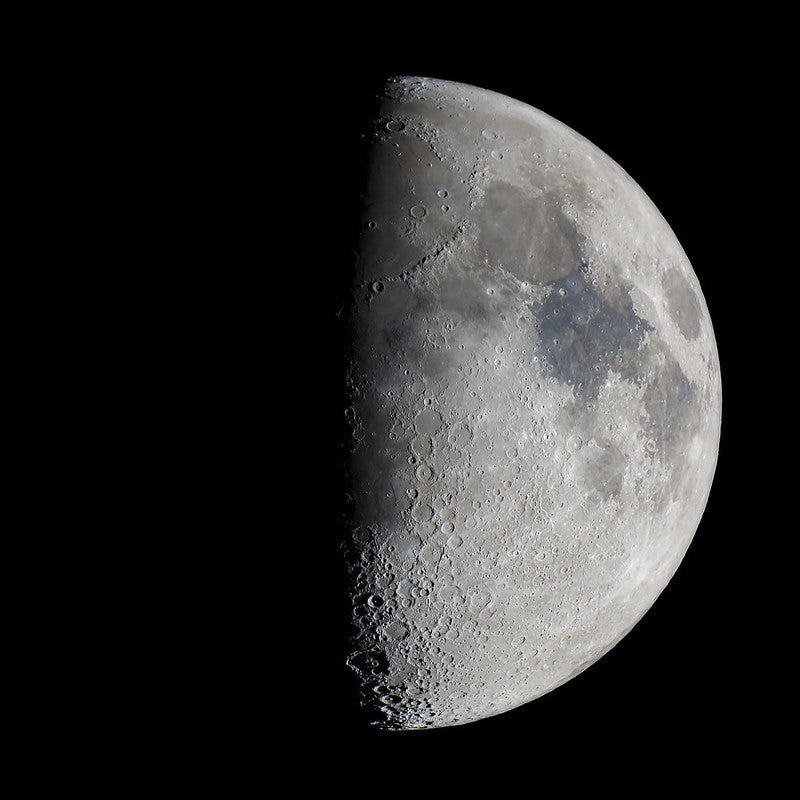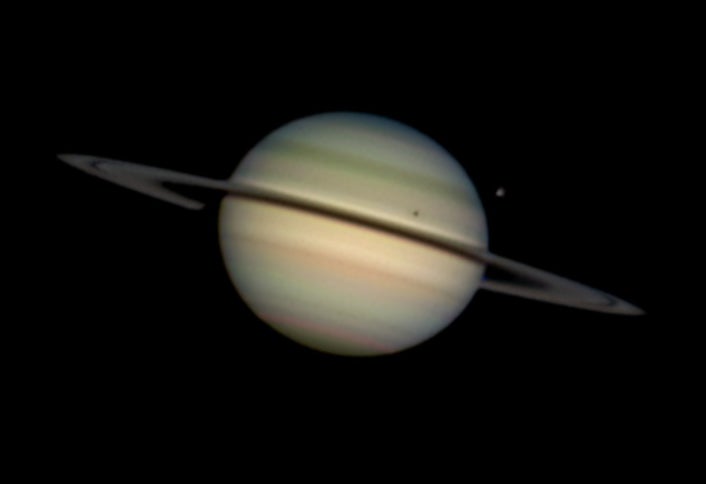The Moon’s ever-changing face offers many great sights for binocular observers. What’s more, the Moon is so bright you won’t have to worry about light pollution.
The binoculars you choose should have a magnification of at least 7, and 10 or 15 would be better still. All binoculars are labeled to show magnification and the size of the lenses. So “7×50” (or “7 by 50”) binoculars offer a magnification of 7 (which means objects appear 7 times closer) and 50-millimeter front lenses.
Most observers like 7-power binoculars because they’re small and relatively light. Binoculars with powers of 10 and up magnify the involuntary motions of your hands and arms, and your target may seem to dance around. Such units work best if you mount them on a camera tripod.
Image-stabilized binoculars also are an option. The electronics inside them compensate for small movements when they’re hand-held, so you can use higher powers more easily.
Once you’ve selected binoculars, one of the first celestial objects to point them at is the Moon. Ironically, viewing when the Moon is brightest (Full Moon) is actually the worst time to view it. From our perspective, the Sun is shining directly on the Moon, minimizing any shadows and revealing scant detail.
The best viewing times are from shortly after New Moon until about 2 days after First Quarter in the evening sky, and from about 2 days before Last Quarter to almost New Moon in the morning sky. Because of the angle of the Sun, lunar shadows are longer then, and features stand out in sharp relief.
This is especially true along the line dividing the Moon’s light and dark portions. This line is called the terminator. Before Full Moon, the terminator is where sunrise occurs; after Full Moon, it marks the sunset line.
Along the terminator, look for mountaintops protruding high enough to catch sunlight while dark, lower terrain surrounds them. On large crater floors, you can follow “wall shadows” cast by sides of craters hundreds of feet high.
Shortly after the Moon’s New phase, you’ll find the thin crescent in the western evening sky after sunset. Point your binoculars at it to see earthshine, which is sunlight that Earth reflects onto the darker part of the Moon, making it visible. Earthshine is often called “the old Moon in the New Moon’s arms.”
Lunar mapmakers differentiate features on the Moon as lighter areas called “highlands” and darker ones called “maria,” the Latin word for “seas.” For observing, the highlands are a treasure-trove of mountains and valleys, bright areas and shadows.
Let’s start by finding some of the maria and moving on to smaller features. This technique is similar to star-hopping, a method deep-sky observers use to find faint objects by using easy-to-find objects as signposts.
Mare Imbrium, the Moon’s second-largest mare, lies in the upper-left quadrant. Note its circular rim, which is a large mountain range.
Now you’re ready to find your first crater. Of the 1,940 named features on the Moon, 1,545 are craters. That’s nearly 80 percent.
These impact scars range in size, and some observers challenge themselves by either noting the smallest crater they can see or how many small craters in a given area they can observe through their binoculars.
Point your binoculars just below Mare Imbrium, and you’ll find Copernicus Crater. This feature spans 58 miles — large for a lunar crater — and it’s more than 12,000 feet deep. View it when the Moon is about 10 days past New, when the crater lies on the terminator. Shortly before sunset, you’ll see its floor disappear in shadow while the narrowing part of the eastern wall appears as a brightly shining crescent.
When observing large craters, note whether you can see rays emanating from them. These features formed when crushed rock sprayed out from a meteor impact. Rays appear as radial streaks and can lie a great distance from the crater itself. Copernicus is a great example of this. And unlike most lunar features, rays show up best at Full Moon.
Archimedes Crater, which lies above Mare Imbrium, looks much different than Copernicus. For one thing, it’s bigger: 87 miles across. And its floor holds old dark lava that really sets it apart from the surrounding terrain.
The dark sea to the right of Mare Imbrium is Mare Serenitatis. Through high-power binoculars, its right side reveals a series of ridges on its floor.
On Mare Serenitatis’ rim at about the 2 o’clock position lies Posidonius Crater. Observe this region when the Moon is about 7 days past New to see the greatest contrast.
Near the Moon’s bottom edge, be sure to observe Tycho Crater. It’s 53 miles across, and it has the most extensive ray system on the Moon. See how far you can follow its rays through your binoculars.
Oceanus Procellarum darkens much of the Moon’s left edge. But point your binoculars left of that vast sea to find the small lunar basin Grimaldi, which spans 138 miles. It appears dark because lava flooded its floor long ago.
Through your binoculars, examine the Moon’s right side. Just above the center line, you’ll find Mare Crisium. At 354 miles across, it covers about as much area as the country of England. Note its slightly oval shape.
Now follow the Moon’s edge about halfway to the top. The prominent crater is Endymion. It features a high wall surrounding a murky floor. You’ll see it best starting when the Moon is only 4 days past New.
And those are some of the prominent lunar features you can spot through binoculars. But this video is just a starting point. You’ll see lots more as you become comfortable viewing our nearest celestial neighbor. Take your time and use a good Moon map. Subscribers wills find six they can print out on our website. Just visit www.Astronomy.com/moonmaps.


